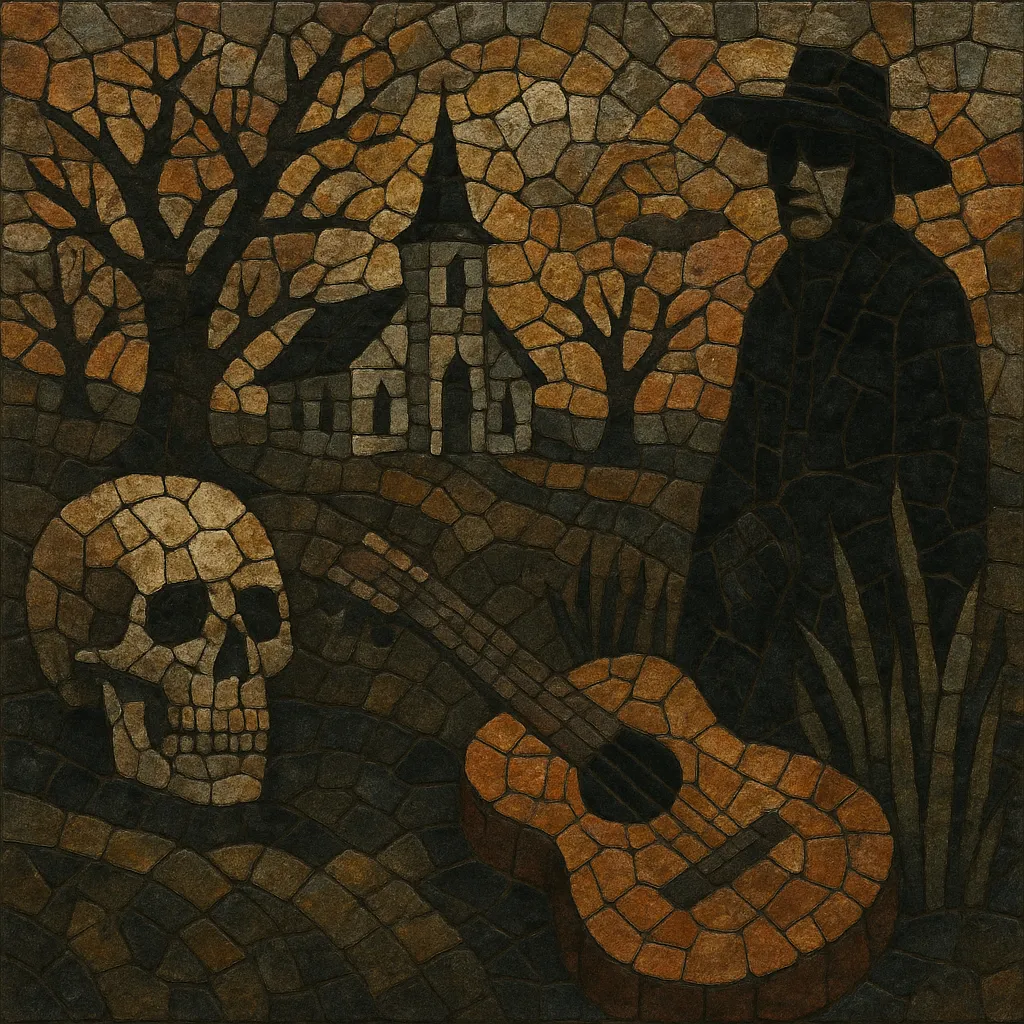
Southern gothic (as a music style) blends American roots idioms—country, folk, blues, gospel, and Southern rock—with the macabre, moral ambiguity, and decaying grandeur associated with the Southern Gothic literary tradition.
Its sound is typically dark-hued and intimate: minor-key harmonies, modal drones, and slow-to-mid tempos underpin storytelling about sin and salvation, haunted landscapes, family secrets, and folk religion. Arrangements often feature acoustic guitar, banjo, fiddle, upright bass, pump organ or harmonium, lap/pedal steel, sparse percussion, and baritone or hushed vocals drenched in room reverb.
Production tends toward earthy and atmospheric—tape-like saturation, creaking room ambience, and subtle field sounds (cicadas, church bells, train rumbles) that evoke the American South’s heat, humidity, and history.
Southern Gothic began as a literary mode (Flannery O’Connor, William Faulkner, Carson McCullers) that explored decay, moral conflict, and religious fervor in the American South. Musically, the ingredients—Appalachian folk, country and gospel harmonies, Delta blues’ haunted minimalism, and Southern rock’s storytelling—were present for decades, but not yet codified under a distinct, explicitly “gothic” Southern banner.
The genre cohered in the 1990s alongside alt-country and Americana, when artists began marrying Southern folk instrumentation to brooding, religiously charged narratives. 16 Horsepower and The Handsome Family became touchstones: minor-key banjo and pump organ, biblical imagery, and stark production signposted a new sound sometimes labeled “Southern gothic” or “gothic Americana.” Slim Cessna’s Auto Club and related Denver scene projects drew on revival-tent gospel and murder ballad traditions while emphasizing atmosphere and dread.
In the 2000s, Wovenhand (David Eugene Edwards) deepened the idiom with ritualistic percussion, droning modes, and apocalyptic lyricism. Murder by Death, Th’ Legendary Shack Shakers, O’Death, and Those Poor Bastards diversified the palette—from chamber-tinged balladry to psychobilly-inflected sermons—while keeping the Southern gothic mood: sin, judgment, and haunted Americana. Critics and fans increasingly used the term to distinguish this darker, myth-soaked branch from mainstream country and roots rock.
Streaming-era discovery and soundtrack placements helped the style reach wider audiences; The Handsome Family’s “Far From Any Road” (True Detective, 2014) became a signature moment. Newer voices like Amigo the Devil blended murder ballad traditions with confessional, contemporary songwriting. The aesthetic also bled into adjacent scenes (gothic country, dark folk, doom-folk), while remaining rooted in Southern imagery, spare instrumentation, and an atmosphere of spiritual unease.

